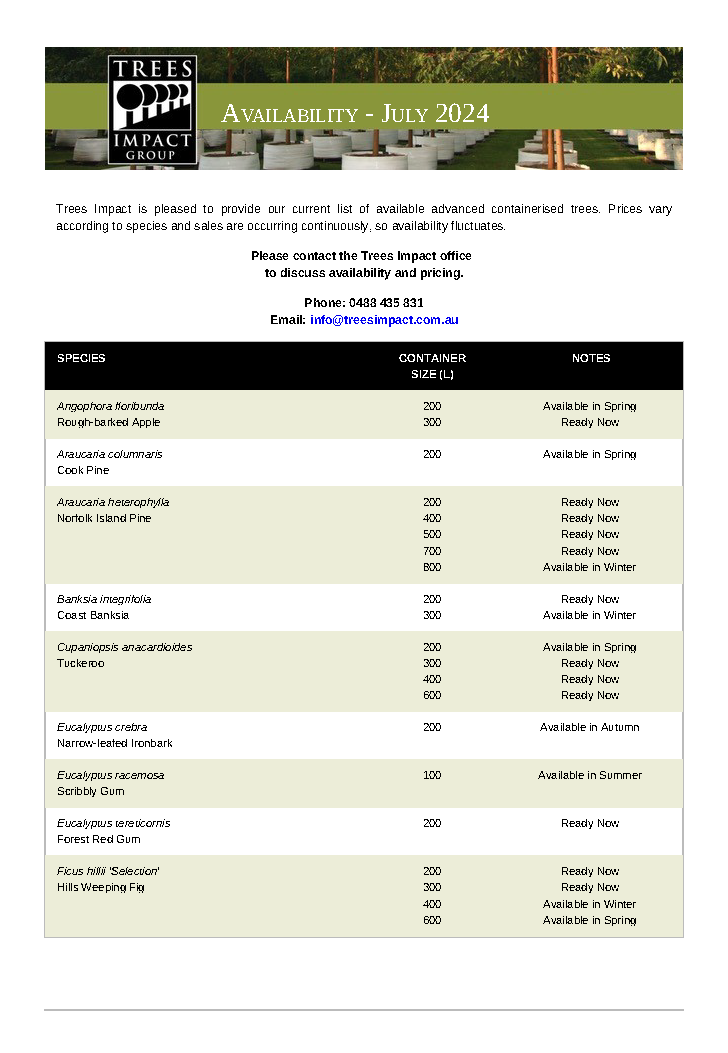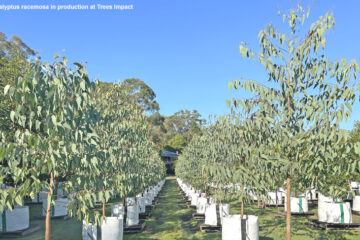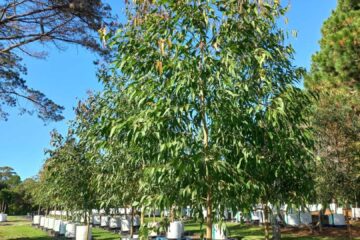AS 2303. A SHORT INTRODUCTION
AS 2303:2018 Tree stock for landscape use – A quick review
The Australian Standard for trees was first released in 2018 as AS 2303:2018. It has evolved from the NATSPEC Specification for trees (as found in Specifying Trees; Clark R, 2003; Construction Information Systems).
AS 2303:2018 represents our best ever opportunity to accept and adopt a robust standard for landscape trees supplied throughout Australia.
As was the case with NATSPEC, the new standard is broken into three sections:
- Criteria for above-ground assessment of tree stock
The criteria found in this section describe “the tree you can see” and include: True to type; Height and calliper; Health, Crown symmetry; Significant injury; Stem taper; Self-supporting; Stem and branch structure; Formative pruning; Included bark; Trunk position; Compatibility of graft unions; and Freedom from pests and disease.
- Criteria for below-ground assessment of tree stock
The criteria found here describe important aspects of “the tree below-ground”, some of which you can see and others you need to dig for. They include: Rootball diameter; Rootball depth; Height of root crown; Non-suckering rootstock; Pests, diseases and weeds; Rootball occupancy; Root direction; and Root division.
- Tree stock balance assessment
Balance is the relationship between the visible parts of the tree (above ground) and the invisible parts (below ground). The Balance criterion in NATSPEC was subjected to a significant amount of research, funded by the NGIA and Hort Innovation and carried out by the University of Western Sydney.
The outcomes of that research have been:
– the endorsement of the concept of Size Index [Height(m) x Calliper(mm)] as an indicator of above-ground tree size, for all species and growing locations, and
– an expanded range of acceptable Size Index, for a given container size, now called “the Preferred range”.
[It should be noted that in AS 2303:2018 Tree Stock Balance is only an informative criterion, rather than a binding one. In a recent handbook put out jointly by the NGIA, Hort Innovation and the University of Western Sydney, it is recommended that users make it a requirement, not just optional, that the Size Index of trees does fall within the ‘preferred range’. Trees Impact endorses that recommendation.]
Grab a copy of AS 2303:2018, read it, apply it and ensure that the trees you use conform to it.


